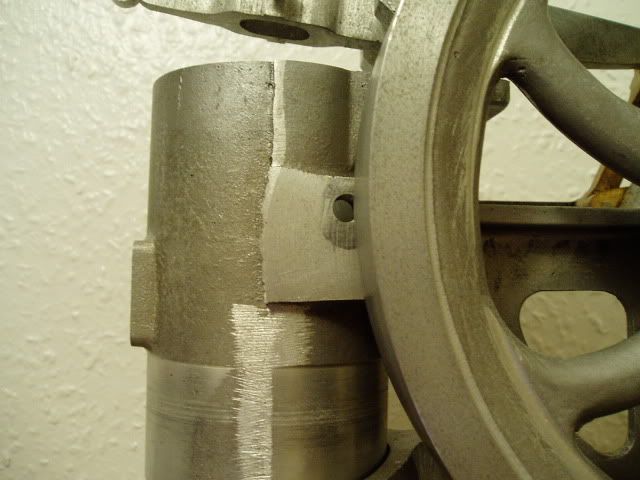- Joined
- Jan 3, 2008
- Messages
- 2,085
- Reaction score
- 17
One of the last more worrysome tasks on the cylinder casting was to bore the top and bottom to accept the cylinder sleeve thus forming the water jacket around the cylinder. This required two different diameters 2.20" at the top and 2.16" at a bottom distance of 4.62" from the top surface of the casting. As before, I left the cylinder casting mounted to the base although this time with the added support of the flywheel bracket being attached. The very bottom of the cylinder casting had been bored previously while doing the lathe work (earlier post) so this provided a reference to center on with the coax indicator (photo 1). Once this was done the top bore of 2.20" was easy enough, visible and measurable, but to reach far enough down to make the lower bore of 2.16" I had to use a longer boring bar which was below the top of the cylinder even with the knee in the full lowered position (photo 2). I used a steel rule to measure from the tip of the boring bar back up to the top of the casting and then subtracted that from the 4.62" depth needed. A little error here shouldn't be that much of an issue. A telescoping gage was used on both the top and bottom bores until the diameters were just an interference fit with the respective diameters on the cylinder sleeve (photos 3 & 4).





























